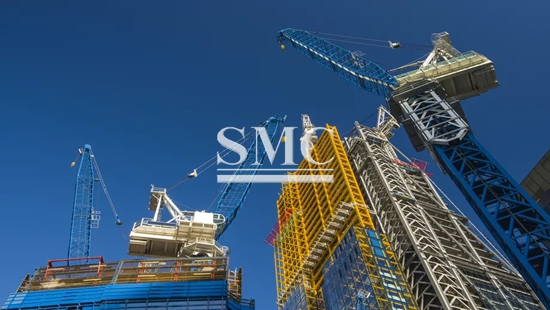
- Oil Pipeline
- Water Pipeline
- Gas Pipeline
- Boat and Mooring Accessories
- Metal for Decoration
- Transformer Components
- Heat Exchanger Pipe
- Air Conditioning Spare Parts & Accessories
- Boiler
- Kitchen and Bathroom Appliance
- Metal for Household Appliance
- Solar Power Appliance
- Elevator
- Roofing and Ceiling
- Cable
- Tank
- Packaging
- Machinery and Equipment Spare Parts & Accessories
- Mold
- Automobile Parts
- Rail and Crane Rail
- Hardware Fitting
- Abrasive
- Road Construction Equipment
- Electronic Components
- Construction and Decoration Materials
- Doors and Windows
- Refrigerators
Trump steel tariffs will make construction, infrastructure projects more expensive
The steel and aluminum tariffs President Trump plans to sign today will make domestic steel and aluminum mills very happy. But the potential shift in metal prices has many industries, including construction, expecting higher costs, and may also impact infrastructure spending across the nation.
In a study released earlier this week, the D.C.-based Trade Partnership, an economic consulting group, projected that 28,000 jobs would be lost in the construction industry alone based on the original, across-the-board tariffs.
Last Thursday, President Trump proposed the 25 percent tariff on imported steel and a 10 percent tariff in imported aluminum. He has since updated that stance by exempting Canada and Mexico from the tariff, and stating that exemptions may be made based on future negotiations.

The tariffs, and expected increase in the price of raw materials, especially in the short term, comes when the country faces an acute affordable housing shortage and political leaders are debating a national infrastructure plan. The cost of action on both fronts may be increased due to rising aluminum and steel prices. Construction accounted for 43 percent of all steel shipments in the United States, according to the American Iron and Steel Institute.
“This announcement by the president could not have come at a worse time,” Randy Noel, chairman of the National Association of Home Builders, said in a statement. “Tariffs hurt consumers and harm housing affordability.”
The American Institute of Architects also opposes the tariffs, saying in a statement that, “any move that increases building costs will jeopardize domestic design and the construction industry, which is responsible for billions in U.S. Gross Domestic Product, economic growth, and job creation.”
According to Neel Khosa, vice president of AMSYSCO, an Illinois-based company that manufactures steel post-tensioning wire for parking garages and high rises, such as the 55 Hudson Yards project in Manhattan, the tariff will have a negative impact on the construction industry by introducing price uncertainty. Until the market stabilizes, introducing the proposed tariffs will lead to price volatility.
“Supplier uncertainty leads us to be uncertain,” he says. “I think it’s going to be a big positive for those who make steel and aluminum in the United States. So several thousand people in those industries will benefit, while several million people will have their wealth re-allocated to those people.”
Not all building projects use a massive amount of steel, of course, and the impact will vary by building type. Single-family homes require much more wood than metal, with steel and aluminum contributing to between 0.5% and 1% of a home’s cost, according to Marketwatch. But larger buildings, including multistory, multifamily construction, require a higher percentage of steel, meaning tariffs will have more of an impact. Even those that are mostly concrete require steel supports and rebar, as well as aluminum window cladding.
Steel and aluminum prices will also impact infrastructure projects. Khosa feels that the proposed tariffs will make it that much harder to pass an effective infrastructure bill because of resulting price increases and uncertainty.
“The steel tariffs will shoot Trump’s infrastructure plan in the foot, to some degree,” Khosa says.